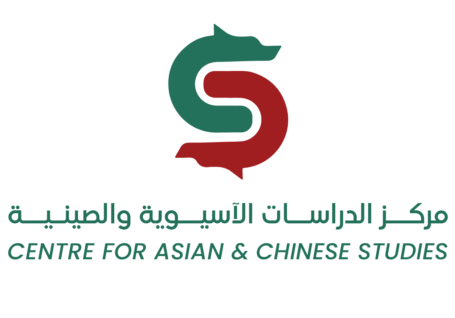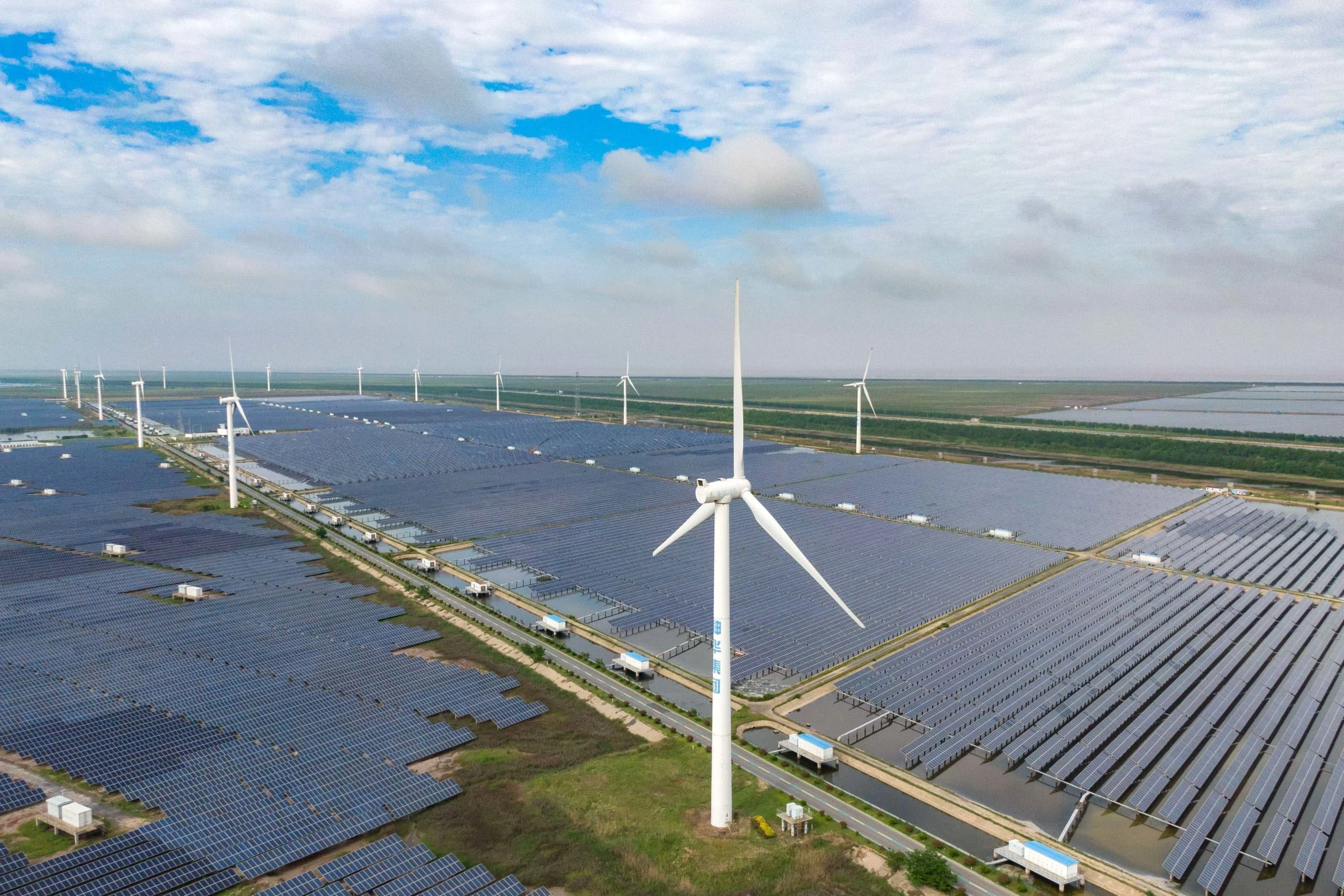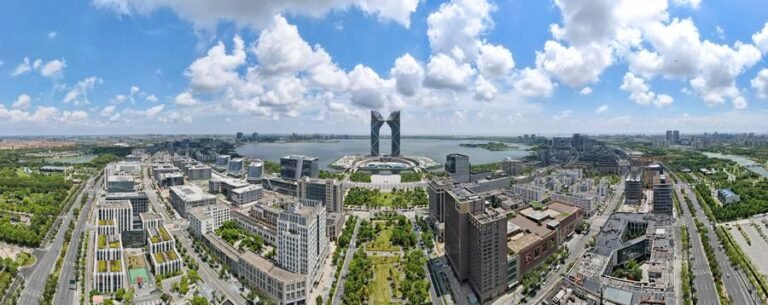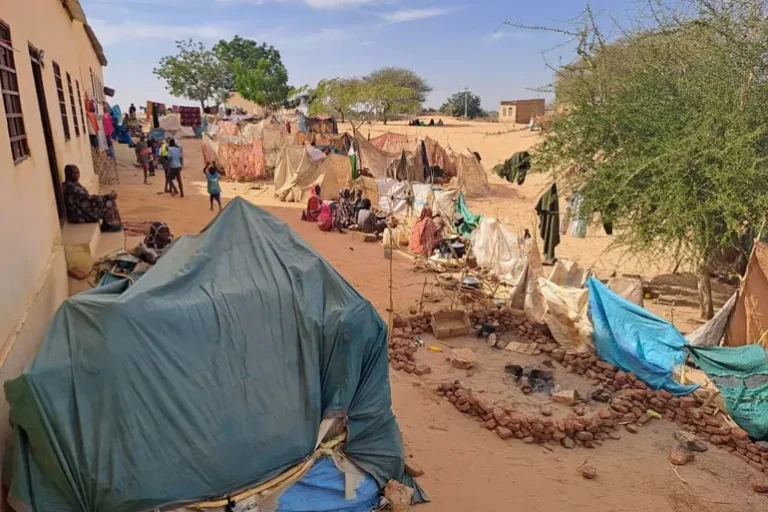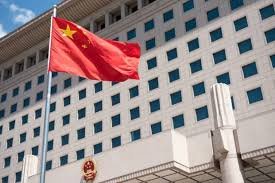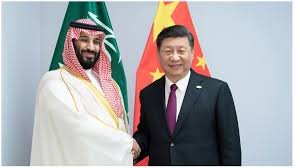
شي ومحمد بن سلمان
By Dr. Haytham Mouzahem*/
China is progressively cementing its position at the forefront of the global economy, simultaneously deepening its economic engagement in the Arab region. This strategic move aims to elevate its international relations, including with the Middle East and North Africa (MENA), to new heights, promising substantial mutual benefits on a win-win basis.
In 2013, China unveiled the visionary “Belt and Road” Initiative, a significant step in realizing this ambition. This initiative seeks to create a vast and integrated network of land and sea routes, connecting China with the majority of the world’s nations. Its primary goal is to enhance trade exchanges and activate bilateral relations across multiple dimensions, including political, economic, financial, military, and security domains.
With a population exceeding 1.4 billion, China has solidified its status as a formidable global economic powerhouse in recent years. Currently, its economy is the world’s largest in terms of purchasing power parity and ranks second, only behind the United States, in market value. Forecasts suggest that China is on track to surpass the United States, becoming the leading global economy by the end of this decade.
The Belt and Road Initiative: A Historic Transformation in Arab-Chinese Relations
The Belt and Road Initiative, launched by Beijing in 2013, has catalyzed a historic transformation in Arab-Chinese relations. This period has seen China ascend to the status of the primary buyer of Arab oil, the main economically, and the foremost investor in the region. This deepening engagement has led to the establishment of comprehensive strategic partnerships between China and key Arab nations, including Saudi Arabia, Egypt, the UAE, and Algeria. Additionally, China’s influence in Iran has grown following a 25-year cooperation agreement.
Two primary factors drive this dynamic shift. First, China’s remarkable economic growth over the past three decades has significantly increased its energy needs. Consequently, the Gulf Cooperation Council (GCC), the world’s largest exporter of oil and liquefied natural gas, has become a pivotal focus of China’s economic activities in the MENA region. Second, there’s a growing perception among Arab countries, particularly in the Gulf, of an uncertain future in their relations with the United States. This stems from the belief that Washington is gradually reducing its regional presence to concentrate on domestic challenges and counter China’s rise.
China’s strategy extends beyond regional engagement to strengthening bilateral relations with key MENA countries, furthering its foreign policy objectives. This approach has been exemplified by the establishment of “comprehensive strategic partnerships” with Algeria (2014), Egypt (2014), Saudi Arabia (2016), Iran (2016), and the United Arab Emirates (2018).
By January 2021, the count of Arab countries that have formally joined this initiative, marked by the signing of memoranda of understanding with China, reached 18. This list includes notable countries such as Syria, Lebanon, Iraq, and Kuwait, demonstrating the initiative’s broad geographic and strategic reach across the Arab world.
The MENA region holds a position of strategic importance in the development of the Belt and Road Initiative. Its geographic location serves as a crucial junction connecting the Mediterranean Sea, the Red Sea, and the Arabian Gulf. This region oversees key sea lanes, including the Strait of Hormuz, Bab-el-Mandeb Strait, and the Suez Canal, which are essential for the global flow of energy resources and trade.
Experts in Arab-Chinese relations highlight the Belt and Road Initiative as a pivotal factor in fostering closer ties and cooperation between China and various countries, particularly Arab nations. The initiative is anticipated to yield substantial positive outcomes in the future. Countries engaging with China through this initiative are expected to reap significant benefits. One of the most notable prospects is the potential for Arab countries to develop their industries and adopt modern technology from China. This collaboration could significantly enhance the Arab world’s capabilities in industrial production and innovation.
Contextualizing China-Arab Summits Leading to 2022
Since the beginning of 2021, China has been dynamically introducing new initiatives and ideas addressing key Arab issues, setting the stage for the significant China-Arab summit in 2022. These initiatives include a five-point plan aimed at achieving security and stability in the Middle East, a four-point strategy to resolve the Syrian conflict, and a three-pronged approach for the “two-state solution” regarding the Palestinian issue.
Wu Si Ke, the former Chinese special envoy to the Middle East, articulated in an interview with Xinhua News Agency that these initiatives represent China’s intensified efforts to strengthen its relationships with Middle Eastern countries. He underscored that these are not merely continuations of China’s historical Middle East policies but are indicative of a strategic intent to fortify ties with the region.
Professor Ma Xiaolin of China Xinjiang University of International Studies, who also heads the Institute of Mediterranean Basin Studies, resonated with these observations. He highlighted that these initiatives illustrate China’s commitment as a responsible major global player, determined to have a positive and significant impact in the Middle East. Beijing’s strategic considerations, he emphasized, demonstrate a profound engagement with the Arab world.
A landmark development in 2018 was the agreement between China and Arab countries to form a strategic partnership, laying a robust foundation for 2022 summit. This summit anticipated to be a pivotal event, potentially crafting a strategic development framework that bridges Chinese and Arab-Islamic civilizations. The aim is to cultivate mutual trust, friendly development, and collaborative assistance, contributing to a more stable and orderly international environment.
Wu Si Ke further expounded on the significance of the summit, stressing the pressing need for China and Arab nations to deepen their cooperative relationship. He characterized this partnership as a “common destiny,” advocating for the establishment of common communities across various spheres. These include a shared development community through the Belt and Road Initiative, a joint security community with an emphasis on counter-terrorism, a unified health community, particularly in response to challenges like the COVID-19 pandemic, and a community committed to facing humanity’s global challenges. This last aspect calls for strong international and regional cooperation, with the United Nations as a pivotal element, and a collective opposition to unilateralism and intimidation tactics.
Exploring the Opportunities of the Belt and Road Initiative for Arab Nations
The Chinese Belt and Road Initiative offers a spectrum of significant opportunities for Arab countries. A key opportunity is the wide opening of doors to Chinese investments in the region. This can manifest in various forms, such as large-scale projects preceding and following the preliminary stages of the initiative, direct Chinese investments through substantial loans or grants, government projects encompassing oil and gas, manufacturing, renewable energy, and high-tech science, as well as joint ventures with the private sector in Arab countries.
One of the most notable impacts of the initiative is the potential to enhance and develop services provided by the state in critical areas like social welfare, healthcare, developmental projects, and security. Such improvement is likely to reflect positively on the social and political stability within Arab nations. This correlation between the provision of life’s necessities and basic services and societal stability is a pattern observed in various countries worldwide.
Another significant aspect is job creation. The Belt and Road Initiative is poised to offer employment opportunities to tens of thousands of young individuals in Arab nations through various infrastructure and investment projects. These projects, characterized by well-planned strategies and robust financing from both China and Arab countries, aim to significantly reduce the high rates of unemployment and mitigate its associated social challenges.
Furthermore, the initiative is set to revolutionize transport services within and between Arab countries and other participating nations, including China, Western, African, and Latin American countries. The development encompasses extensive state infrastructure upgrades, such as airports, harbors, bridges, highways, and railway lines. The enhancement of these transport networks is anticipated to synergize with external production networks, elevating the economic performance of Arab countries in comparison to China and other economically strong nations.
Authored by the Head of the Center for Asian and Chinese Studies in Beirut, visiting researcher at the China-Arab Studies Center for Reform and Development at Shanghai University of International Studies.
